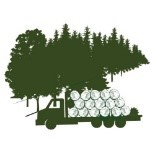The following image shows how a typical Devon could look in 30 years’ time, with additional tree cover. Actions to ‘protect’, ‘manage’ and make a ‘positive change’ have enabled additional trees to be accommodated without compromising existing habitats or heritage.
The farmland remains as productive agriculture with an increasingly diversified business, meanwhile, the landscape character has been enhanced. The vision includes trees and hedges which have been planted, and trees and scrub which have regenerated naturally.
A shared vision for 30 years’ time
Hover, click or tap the numbers on the image for more information.

Wetlands
Actions to ‘protect’ landscape
Important wetlands on valley floor retained
Smooth horizon and long view
Action to ‘protect’ landscape
Smooth horizon left clear of trees, open character and views of moorland retained
Archaeological site kept free of trees

Action to ‘protect’ landscape
Archaeological site kept clear of trees
Tussocky grassland
Action to ‘protect’ landscape
Open tussocky grassland retained as bat foraging habitat
Wet flush habitat
Action to ‘protect’ landscape
Wet flush habitat retained
Medieval field patterns
Actions to ‘protect’ landscape
Medieval field patterns remain distinct and recognisable
Dynamic woodland and moorland edge
Action to 'manage' landscape
Dynamic edge between woodland and moorland creates upland habitat mosaic
Ancient woodland restored
Action to 'manage' landscape
Ancient woodland sites restored from plantations
Regeneration of scrub

Action to 'manage' landscape
Regeneration of scrub up upland valley reduces downstream flooding
Hedgebanks
Action to 'manage' landscape
Hedgebanks restored and gaps in beech shelterbed replanted
New copse

Action to 'manage' landscape
New copse in filed corner, linking with woodland and hedge network
Hedgerow trees

Action to 'manage' landscape
Hedgerow trees established every 40m on average
New wet woodland
Action to 'manage' landscape
Mosaics of new wet woodland / scrub / rush pasture established on valley floor
Coastal scrub
Action to 'manage' landscape
Regeneration of coastal scrub provides habitat and helps to stabilise cliffs
Productive woodland increased
Positive landscape change
Productive woodland increased. Extended well-managed woodland is now made up of a resilient mixture of species helping to protect against pests and diseases. The healthy woodland helps provide many Public Goods such as flood alleviation, clean air and carbon sequestration.
Woodland extended
Positive landscape change
Woodland extended and linked into hedge network to create wildlife corridors
Agroforestry
Positive landscape change
Agroforestry methods are adopted, introducing trees to support farm productivity. Includes new woodpasture habitat managed through grazing
New parkland trees

Positive landscape change
Reinstated avenue and new parkland trees enhance setting of listed building
New hedges and hedgebanks
Positive landscape change
New hedges and hedgebanks planted to strengthen and respect historic field pattern, with priority to planting along contours to slow water runoff and limit soil erosion
Local timber supply

Positive landscape change
Strengthened rural economy through local timber supply chains with increased use of local timber. This helps to ensure the carbon is locked up for generations, and wood is used as a substitute for carbon-emitting materials such as concrete and steel.
Orchard extended

Positive landscape change
Orchard extended and includes a range of fruit and nut trees
New riverside path
Positive landscape change
New riverside path
New schemes may comprise a single type, or mixture of types, for example a medium-sized planted woodland with scrub regeneration at the edges.
See our Step by Step guide to establishing more trees